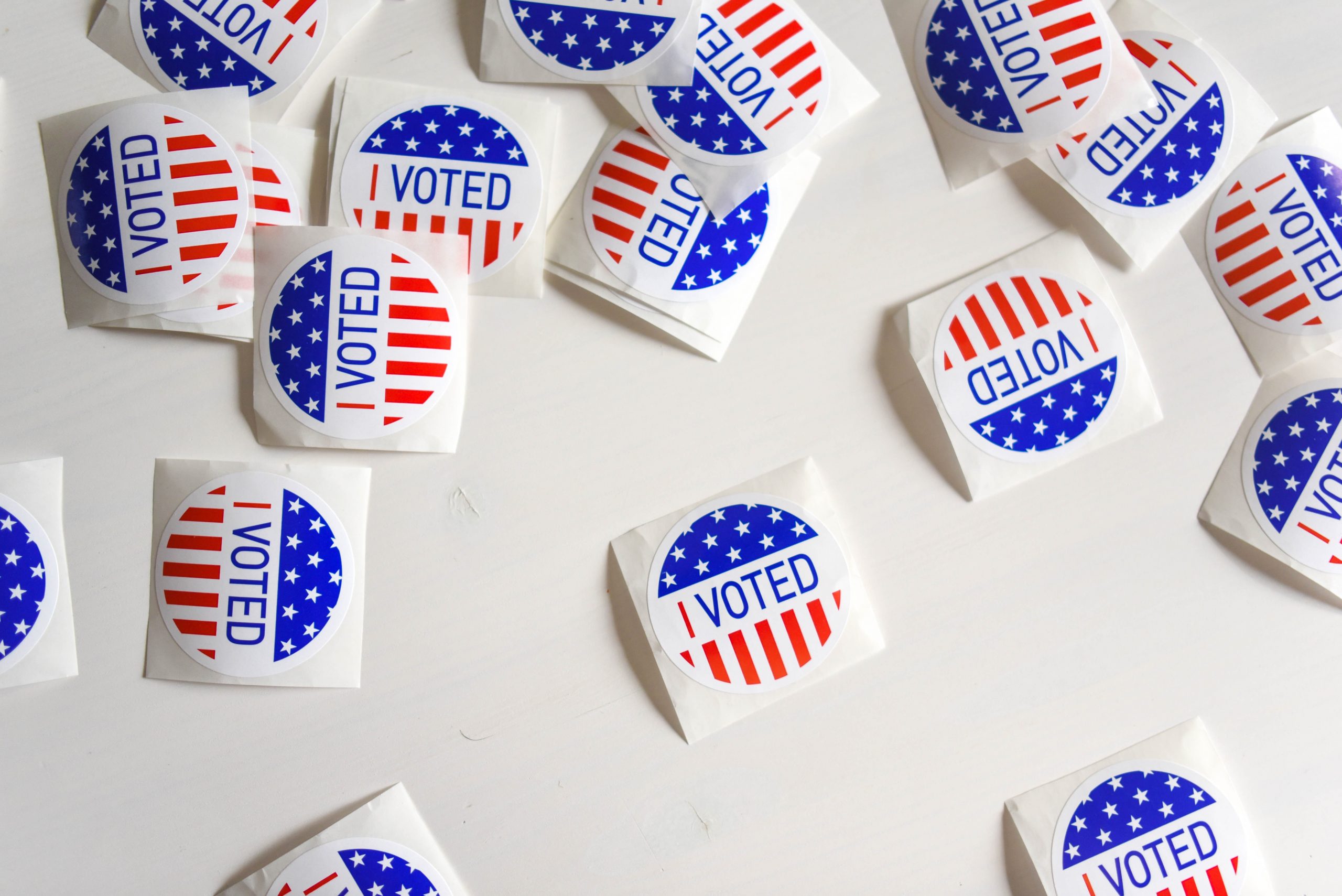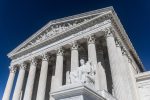Throughout U.S. history, many have fought to extend the right to vote to all adults. In the beginning, voting was a privilege that only white male property owners could have. Voting is now a right regardless of economic standing, sex or race, but that has not stopped politicians from finding legal methods to decide who can vote and who cannot.
Netflix’s recently released a docu-series made by Vox called “Whose Vote Counts, Explained” in late September 2020. This three-episode limited series narrated by Leonardo DiCaprio, Selena Gomez and John Legend explores how voter suppression, disenfranchisement and money play a role in American politics. Here are some takeaways from the series, which can help you learn about the complex history of the right to vote in the U.S., as well as ways to make sure your vote counts this upcoming election.
1. Modern-Day Voter Suppression Has Its Roots In The Legacy of Slavery
The first episode of the series discusses voter suppression and its origins in the aftermath of slavery. The 15th amendment, made following the Civil War, defends peoples’ right to vote from race-based discrimination but said nothing about education, economic status or criminal history. State governments used this loophole to prohibit people from voting based on felony convictions and literacy tests, as well as making voting financially inaccessible through poll taxes. Due to biases in the criminal justice system, poll taxes and literacy tests soon became common, preventing many Black and non-English speaking people who could not pass the test or afford the tax from voting.
The Voting Rights Act of 1965 outlawed poll taxes and established government oversight of voter registration if an area had less than 50% non-white people registered to vote. States that were notorious for voter suppression now had to get federal approval if they wanted to change any laws regarding voting. More and more Black Americans were registering to vote, and both parties agreed that voting should be easy.
After the Supreme Court struck down a provision that required some states to get clearance before changing voting laws, some states have started finding new ways to restrict voting by closing polling places, especially in communities of color.
In 2020, the COVID-19 pandemic has put a strain on the voting system. States have a responsibility to run elections, and each has a different policy on mail-in ballots. In eight states, ballots are mailed to every registered voter. For the rest of the country, voters have to request a mail-in ballot and give a reason as to why they cannot vote in person; in four states, the pandemic is not a valid reason to vote by mail.
The United States Postal Service lacks much-needed funding, leaving voters feeling uncertain about mailing their ballots. Some states have created drop-off boxes to restore faith in the system. However, issues remain — Texas recently decreased the number of ballot drop-off boxes to just one per county, and in California, unofficial ballot drop-off boxes have been placed throughout the state by the Republican Party.
2. Americans Are Not Excited To Go To The Polls
America ranks 26th in the world when it comes to voter turnout rates, with only 55.7% of all eligible voters participating. Although voter suppression is partially responsible for low turnout rates, the way America conducts elections is also partly to blame. According to “Whose Vote Counts, Explained,” 18 of the 25 countries with the highest turnout rates hold elections on weekends, unlike the U.S. Belgium, Australia, Mexico and Greece consider voting to be a duty similar to jury duty. Voting is mandatory and those who do not may be fined or have to go to court.
Many countries have automatic registration — eligible voters are registered whenever they interact with a government agency. Currently, only 19 U.S. states have automatic voter registration. This makes it easier for younger people to register since they can easily do so when taking their road test at the DMV. Only two states have same-day voter registration and North Dakota does not have a registration process.
Many people in the U.S. feel that their vote will not matter because of how politicians rig elections in favor of their party. Every 10 years after the census data is collected, states redraw district lines to reflect changes in demographics. However, redistricting is left to state legislatures, where the party currently in the majority often redraws the lines to help their candidates win. In the electoral college system, the candidate with a majority of votes in a state will receive all of the state’s electoral votes.
3. The Electoral College Distorts The Concerns Of The American People
The electoral college has become the source of heated debate, with many calling for it to be abolished and for the use of a simple popular vote. In the third episode of “Whose Vote Counts, Explained,” leading experts discuss the effects of the electoral college and how it misrepresents the American people.
Due to past gerrymandering, some states decided to use independent commissions to redraw lines, rather than the legislature. But in many cases, this led to a Republican bias because people gerrymandered themselves.
Democrats tend to live in urban areas whereas Republicans live in suburban areas. In a state like Florida, this means there would be fewer Democratic representatives and more Republican representatives, but the Democratic representative would represent a larger population than the Republican representative would. Cities are underrepresented and suburban and rural communities are overrepresented even though they are not a significant portion of the population.
“It diminishes the electoral voice that ‘one person, one vote’ for those who live in the cities,” said Carol Anderson, author of the book “One Person, No Vote.”
Misrepresentation can affect legislation at a federal level. Issues voters are concerned about like gun control, education and student-debt forgiveness are not being solved because the party in power does not represent the majority of the population.
“That kind of outcome where it’s driven by the minority is okay as long as it’s infrequent,” said Danielle Allen, a political scientist from Harvard.
A president winning the electoral college but not the popular vote has become increasingly common. It happened in 2000 in the race between Al Gore and George W. Bush, and again in 2016 when President Trump lost the popular vote by roughly 3 million votes. Although a president’s term is only four years, the Supreme Court justices he or she selects serve for life, often for decades after the president’s term ends. Four out of the nine justices on the court today were nominated by presidents who lost the popular vote. No other justices in history besides these four were nominated by presidents who lost the popular vote.
4. How To Make Sure Your Vote Counts
Many voters are concerned about how they can safely vote and make sure their vote is counted. The first step is checking if you are registered to vote, online or with the help of the party a voter is affiliated with. Although the registration date has passed in most states, some have same-day registration.
The second step is to make a plan to vote and follow the appropriate procedures. Whether one plans on voting in-person, early or by mail-in ballot, it is important to decide ahead of time which method you plan on using. If you choose to vote by mail, make sure to follow your state’s procedures and request a ballot before the deadline. When filling out the ballot, read the instructions carefully. Simple mistakes like using the wrong color ink or not signing on the envelope can cause your ballot to be discarded.
Finally, decide how to submit the ballot. Voters can stick to the traditional way of mailing it, or they can drop it off at secure drop-off boxes in their county. Some states even allow voters to turn their ballots in at polling places on Election Day.
“Whose Vote Counts, Explained” gives viewers important information about the history of voting in America and modern-day struggles with the ballot. Learning about the different ways politicians suppress voting could leave viewers discouraged, but knowing how far we have come could also be empowering. When marginalized people show up at polling places, the status quo changes. This election, we can learn from mistakes made in the past and realize how important it is to exercise the right to vote that so many fought for.
















